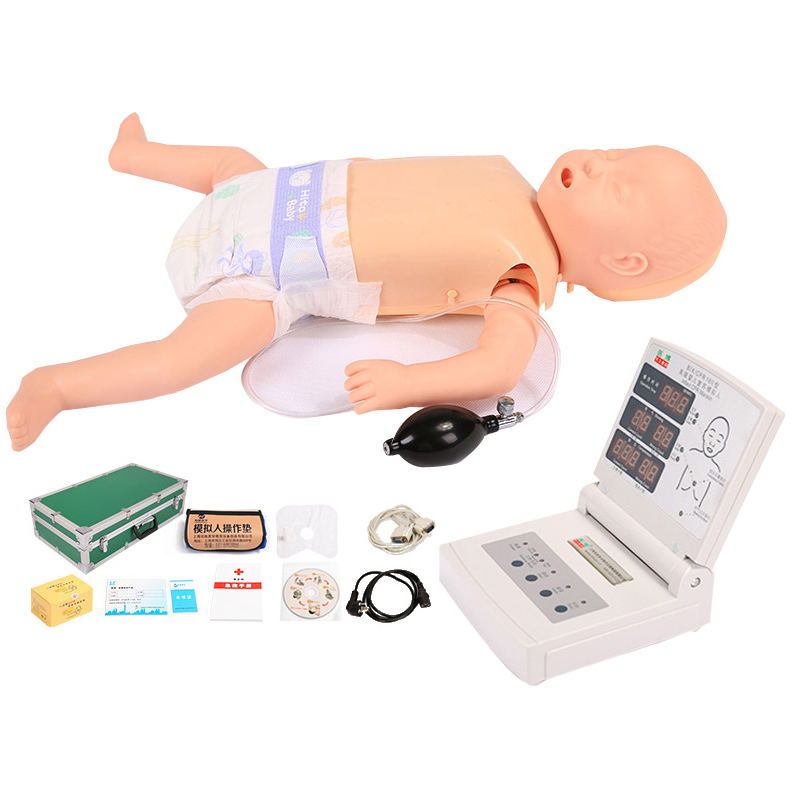12-07-2024
ADA MED SUPPLY LIMITED
Neonatal cardiopulmonary resuscitation (CPR) model is a highly simulated medical teaching tool designed to simulate various physiological responses and operating environments of newborns during CPR. Here is a detailed explanation of its definition and how it simulates the real world:

I. Definition of neonatal cardiopulmonary resuscitation model
Neonatal cardiopulmonary resuscitation model is a simulation device designed for medical education and training, which provides a realistic training platform for medical personnel by simulating the anatomy and physiological characteristics of newborns. This model can not only help medical staff to be familiar with and master the operation process of neonatal cardiopulmonary resuscitation, but also exercise their emergency response ability and teamwork ability in a simulated real environment.
Second, how to simulate the real situation
Highly simulated anatomical structure: The neonatal cardiopulmonary resuscitation model uses advanced materials and technologies to accurately simulate the structure and morphology of key parts of the newborn, such as the chest, lungs, and heart. This allows trainees to feel similar touch and feedback during the operation as a real newborn.
Physiological response simulation: Advanced sensors and electronic systems are integrated into the model to simulate various physiological responses of newborns during CPR. For example, when performing chest compressions, the model can simulate the beating of the heart and the flow of blood; When mouth-to-mouth breathing is performed, the model simulates the expansion of the lungs and the exchange of gas. The simulation of these physiological responses makes the training more realistic.
Instant feedback mechanism: The model is equipped with an instant feedback system to monitor and evaluate the student's operation in real time. Through the display screen or sound prompts, the system can immediately feedback whether the trainees' key indicators such as pressing depth, frequency, and blowing volume meet the standard. This kind of immediate feedback mechanism helps students to correct wrong operation in time and improve the training effect.
Multiple training modes: In order to meet the needs of different trainees and teaching, neonatal cardiopulmonary resuscitation models usually have multiple training modes. For example, different difficulty levels and assessment standards can be set to suit different levels of students; Different first aid scenarios and emergency situations can also be simulated to exercise students' resilience and teamwork.
In summary, the neonatal cardiopulmonary resuscitation model successfully simulates the real situation of newborns in the process of cardiopulmonary resuscitation through highly simulated anatomical structure, physiological response simulation, immediate feedback mechanism and various training modes. This simulation training not only improves the operation skills and emergency response ability of medical staff, but also reduces the risks and complications that may occur in actual operation.